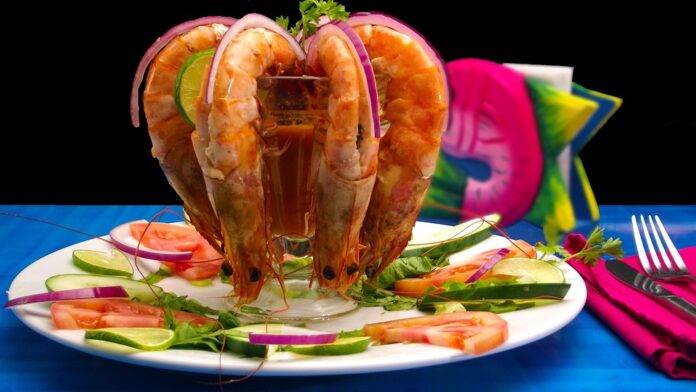Introduction
Aquaculture, also known as fish farming, is the practice of cultivating aquatic organisms such as fish, shellfish, and seaweed in controlled environments. With the increasing demand for seafood globally, there has been a growing interest in water-efficient aquaculture techniques to ensure sustainable production while minimizing environmental impact. In this report, we will explore the advancements in water-efficient aquaculture techniques and their potential benefits.
Current Challenges in Aquaculture
Aquaculture production has been facing various challenges in recent years, including water scarcity, pollution, disease outbreaks, and high energy consumption. Traditional aquaculture practices often involve high water usage and waste discharge, leading to environmental degradation and resource depletion. In order to address these challenges, researchers and industry experts have been developing innovative water-efficient techniques to improve the sustainability of aquaculture operations.
Water Reuse Systems
One of the key advancements in water-efficient aquaculture is the development of water reuse systems. These systems are designed to recycle and treat water within aquaculture facilities, reducing the need for fresh water inputs and minimizing waste discharge. By implementing water reuse systems, aquaculture operations can significantly reduce their water consumption and environmental impact.
Recirculating Aquaculture Systems (RAS)
Recirculating aquaculture systems (RAS) are a type of water reuse system that recirculates and treats water within closed-loop systems. In RAS, water is continuously filtered and reused, allowing for higher stocking densities and more efficient waste management. RAS technology has been increasingly adopted in aquaculture operations, particularly for high-value species such as salmon and shrimp.
Integrated Multi-Trophic Aquaculture (IMTA)
Integrated multi-trophic aquaculture (IMTA) is another water-efficient technique that involves cultivating multiple species in the same environment to maximize resource utilization and minimize waste. In IMTA systems, the waste products from one species are used as nutrients for another species, creating a symbiotic relationship that enhances overall productivity and sustainability. IMTA has been shown to reduce environmental impact and improve resource efficiency in aquaculture operations.
Benefits of Water-Efficient Aquaculture Techniques
The adoption of water-efficient aquaculture techniques offers a wide range of benefits for both producers and the environment. Some of the key benefits include:
Improved Resource Efficiency
Water-efficient aquaculture techniques allow for more efficient use of resources such as water, energy, and feed. By reducing water consumption and waste discharge, aquaculture operations can minimize their environmental footprint and conserve valuable resources for future generations.
Enhanced Productivity
Water-efficient aquaculture techniques can lead to higher productivity and profitability for producers. By optimizing water quality and waste management, aquaculture operations can improve growth rates, feed conversion ratios, and overall production yields.
Environmental Sustainability
Water-efficient aquaculture techniques help to promote environmental sustainability by reducing pollution, habitat destruction, and pressure on wild fish stocks. By implementing sustainable practices, aquaculture operations can contribute to the preservation of aquatic ecosystems and biodiversity.
Case Study: Water-Efficient Aquaculture Farm
To illustrate the practical application of water-efficient aquaculture techniques, let’s consider a hypothetical case study of a shrimp farm that has implemented recirculating aquaculture systems (RAS) and integrated multi-trophic aquaculture (IMTA) practices.
Farm Overview
The shrimp farm is located in a coastal area with limited access to fresh water and a high risk of pollution from nearby urban development. The farm produces Pacific white shrimp (Litopenaeus vannamei) for both domestic and export markets.
Water-Efficient Practices
The farm has invested in RAS technology to minimize water usage and improve water quality for shrimp production. The RAS system includes a series of filters, biofilters, and oxygenation units to maintain optimal conditions for shrimp growth. In addition, the farm has implemented IMTA practices by co-cultivating seaweed and bivalves alongside shrimp to utilize waste nutrients and enhance overall productivity.
Results and Benefits
Since implementing water-efficient aquaculture techniques, the shrimp farm has experienced significant improvements in production efficiency and environmental sustainability. The farm has reduced its water consumption by 50% and waste discharge by 30%, leading to cost savings and regulatory compliance. The farm has also seen an increase in shrimp growth rates and survival rates, resulting in higher yields and profitability.
Future Outlook
The future of water-efficient aquaculture looks promising, with ongoing research and development efforts focused on advancing sustainable practices and technologies. As global demand for seafood continues to rise, the adoption of water-efficient aquaculture techniques will be crucial for ensuring the long-term viability of the aquaculture industry.
In conclusion, water-efficient aquaculture techniques offer a range of benefits for producers, consumers, and the environment. By implementing innovative practices such as water reuse systems, recirculating aquaculture systems, and integrated multi-trophic aquaculture, aquaculture operations can improve resource efficiency, productivity, and sustainability. As the industry continues to evolve, it is essential for aquaculture producers to prioritize water efficiency and environmental stewardship in their operations.




